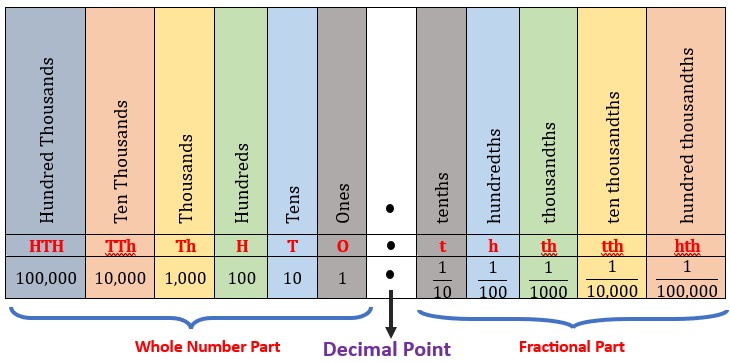Face Value and Place values
Addition and Subtraction
Multiplication
Exponents
Division
Divisibility Rules
GCD & LCM
Decimals
Fractions
Integers
Face Value:
The face value of a digit in a number is the same digit itself. Let us understand this with the help of an example.
Example: Find the face value of all the digits in the number 3279.
Solution: The face value of every digit is the number itself.
- The face value of ‘3’ is 3 itself.
- The face value of ‘2’ is 2 itself.
- The face value of ‘7’ is 7 itself.
- The face value of ‘9’ is 9 itself.
Place Value
Place value tells us how much each digit in a number is worth based on its position. Even if a digit appears more than once, its value changes depending on where it is in the number.
Example: Write down the place value of each digit in the number 543.
Solution: The correct place value of each digit in the number can be expressed as follows:
3 × 1 = 3 or 3 ones
4 × 10 = 40 or 4 tens
5 × 100 = 500 or 5 hundreds
There are two types of place value charts that are most commonly used:
* International place value chart
* Indian place value chart
Indian Place Value Chart
The Indian place value chart is a table that is used to find the value of each digit in a number based on its position, as per the Indian numeral system. In this place value chart, a 10-digit number is grouped into periods of ones, thousands, lakhs, crores, and so on.

International Place Value Chart
The International numeral system is used worldwide, where numbers are counted in ones, tens, hundreds, thousands, ten thousands, hundred thousands, millions, and so on.
In this system, numbers are grouped into periods like ones, thousands, and millions. A comma is placed after every three digits from the right to make reading easier.
For example, in the number 135,912,332, commas help separate the periods.Below is the International place value chart, showing place values up to hundred millions.

Place Value Chart with Decimals:
The decimal place value chart shows the place value of the digits in a decimal number. A decimal number system is used to express the whole numbers and fractions together using a decimal point. This decimal point lies between the whole number part and the fractional part. While the whole number part follows the usual place value chart of ones, tens, hundreds, and so on, there is a slight difference in the place value of the numbers to the right of the decimal point. If we go to the right after the decimal, the place values start from tenths and go on as hundredths, thousandths, and so on. The first place to the right of the decimal is on the one-tenth (1/10th) position, the next one is 1/100 and it goes on. Observe the following place value chart for decimal numbers.

Divisibility rules:
